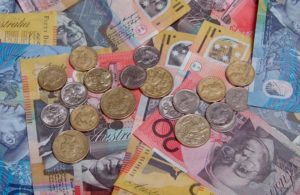 Australian dollar traded lower against its US counterpart on Monday and was poised for its most considerable yearly decline since 2008 on signs that economic recovery in the United States was deepening, which may urge the Federal Reserve Bank to continue trimming its asset purchases.
Australian dollar traded lower against its US counterpart on Monday and was poised for its most considerable yearly decline since 2008 on signs that economic recovery in the United States was deepening, which may urge the Federal Reserve Bank to continue trimming its asset purchases.
AUD/USD fell to a session low at 0.8834 at 1:50 GMT, after which consolidation followed at 0.8846, down 0.27% for the day. In the week ended December 27th the pair registered its tenth consecutive weekly drop, or the longest string of losses since 1983. Support was likely to be received at, while resistance was to be encountered at December 24th high, 0.8934.
The Federal Reserve Bank said on December 18th that it intends to reduce its monthly bond purchases in January to $75 billion from $85 billion, while also reinforcing its position that the benchmark interest rate will remain low for an extended period of time. Bank’s policymakers will probably trim asset purchases in increments of $10 billion over the next seven meetings before ending the program in December 2014.
“The big theme has been Fed tapering,” said Janu Chan, economist at St. George Bank Ltd. in Sydney, cited by Bloomberg News. “With that set to continue into 2014, we’ll expect the Aussie to come under some further pressure over the next year.”
At 15:00 GMT today the National Association of Realtor’s (NAR) will publish data regarding pending home sales in the United States, an indicator for future housing market activity. The corresponding index probably rose 1.0% in November compared to October, according to the median estimate of experts. In October compared to September pending home sales decreased 0.6%. Better than projected sales in November will certainly provide support to greenbacks demand.
Meanwhile, in Australia, Port Hedland, the biggest iron ore-export terminal, shut down during the weekend, as the Tropical Cyclone Christine approaches the Pilbara coast, the same media reported. Australia’s cyclone season typically continues from November to April, as storms affect shipping of commodities and shut offshore oil and gas production.
In addition, Chinese Purchasing Managers’ Index probably slowed down to a reading of 51.2 in December from 51.4 in the preceding month, according to the median estimate of economists participated in a survey by Bloomberg News. The official reading is expected to be released on January 1st by the National Bureau of Statistics and China Federation of Logistics and Purchasing. Values above the key level of 50.0 are usually considered as an indication that activity in the sector has expanded. This report is crucial for the Aussie, as China is Australias largest export market.
The yield on Australian 10-year government bonds was little changed at 4.27% today.
Elsewhere, the Aussie was lower against the euro, with EUR/AUD cross advancing 0.30% on a daily basis to trade at 1.5547 at 8:09 GMT. AUD/NZD pair was steady, dipping 0.05% to trade at 1.0868 at 8:09 GMT.





